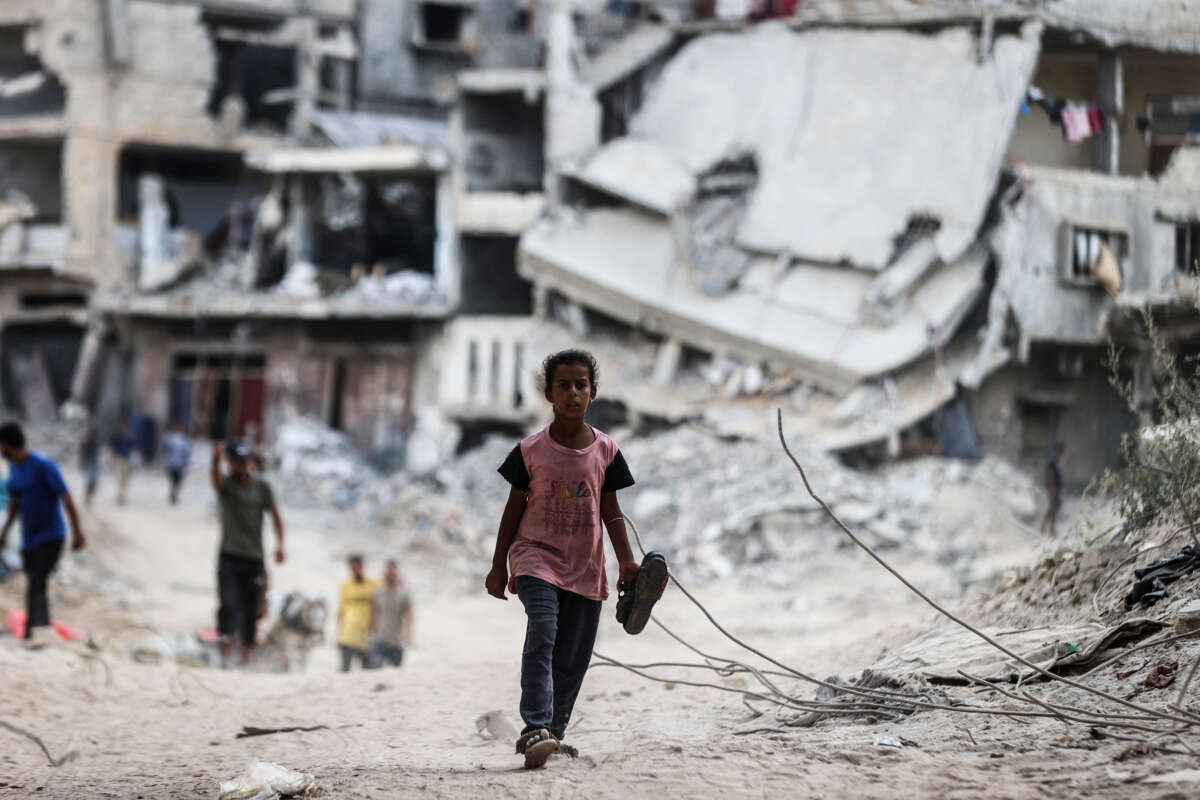Israel’s relentless bombing campaign in Gaza has, over the course of 300 days, created a staggering amount of debris — not only burying Palestinians alive and destroying life-supporting infrastructure, but also putting Palestinians at risk to a number of pollutants that could cause diseases like cancer long after the genocide has ended.
According to an assessment of satellite imagery by UN-Habitat and the UN Environmental Programme (UNEP), Israel’s genocide has created approximately 42 million metric tonnes, or about 46 million tons, of debris.
This amounts to 14 times the total amount of debris created in all other conflicts across the globe in the last 16 years, all concentrated in a region one-sixteenth of the size of New York City with one of the densest populations on Earth. This amounts to 114 kilograms of debris for every square meter of the Gaza Strip, or about 23 pounds per square foot.
The assessment additionally found that nearly two-thirds of the structures in Gaza have been damaged, or the equivalent of Israel damaging over 6 percent of the structures in Gaza every month on average.
Aside from the myriad dangers associated with the vast destruction of infrastructure — including waste management buildings, water treatment centers, and hospitals — the debris itself poses many dangers to Palestinians in the short and long term.
Hidden within the debris are an unknown number of unexploded bombs that could detonate on contact. Because roughly 10 percent of bombs don’t explode on contact, and Israel has dropped bombs at a speed unmatched by nearly any other modern conflict, the UN Mine Action Service has estimated that just clearing unexploded ordnance from the region could take 14 years after the genocide ends.
The debris also contains a number of dangerous substances and pollutants that pose major health risks, with some noting that Israel is committing ecocide.
In January, when there was half the amount of debris there is now, UN officials estimated that there was 800,000k metric tonnes of cancer-causing asbestos strewn about in Gaza. Palestinians are forced to navigate this debris to find shelter or other tools for survival, while pollutants are leaking into the water or the ground. Human remains are also mixed in the debris, with at least 10,000 Palestinians buried under the rubble in Gaza — and potentially many more, as the UNEP has noted.
Combined with the fact that Israel has destroyed much of Gaza’s water treatment capacity and that Israel has cut water access to just 6 percent of pre-October levels, this means that Palestinians, scrounging for any water to drink or use for cooking, are extremely exposed to pollution. Health care workers who have worked in Gaza have said that they have witnessed desperate parents mixing polluted water with formula in order to feed their babies.
Israel has long used pollution and destruction of basic resources as a weapon against Palestinians. Water was already extremely polluted in Gaza before the genocide, with the WHO reporting in 2019 that 97 percent of the water from its aquifer was too polluted to meet standards for consumption.
24 Hours Left: All gifts to Truthout now matched!
From now until the end of the year, all donations to Truthout will be matched dollar for dollar up to $18,000! Thanks to a generous supporter, your one-time gift today will be matched immediately. As well, your monthly donation will be matched for the whole first year, doubling your impact.
We have just 24 hours left to raise $18,000 and receive the full match.
This matching gift comes at a critical time. As Trump attempts to silence dissenting voices and oppositional nonprofits, reader support is our best defense against the right-wing agenda.
Help Truthout confront Trump’s fascism in 2026, and have your donation matched now!
